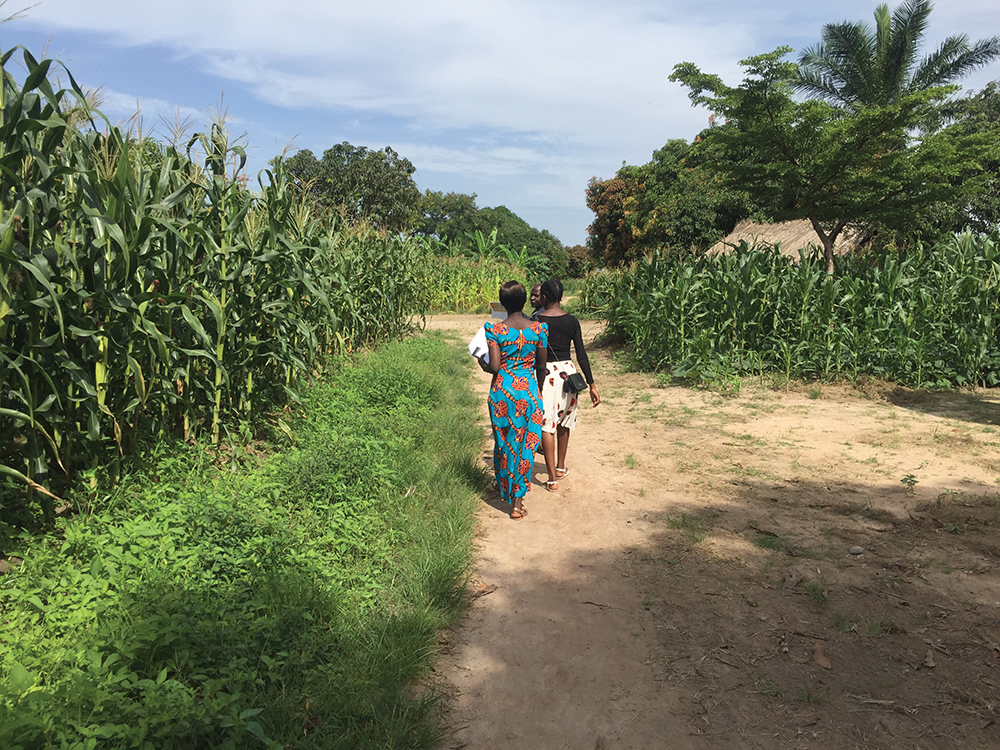Science asserts that agroforestry can have many benefits, including increased biodiversity, reduced erosion and healthier trees and crops. But what are people’s attitudes toward agroforestry in the developing world, and who is choosing to implement these mixed land management systems?
Ph.D. student Sonia Bruck is working hard to find answers to these questions. She’s partnered with Anthony Kimaro, Tanzania country representative for the World Forestry Centre (ICRAF) and Peter Matata, environmental scientist at the Tanzanian Ministry of Agriculture, because of their expertise on agroforestry in rural areas throughout Africa.

“I wanted to work with ICRAFbecause their headquarters are in Africa. They’re connected to the people in villages throughout the country and are there to ensure these projects continue,” Bruck says.
She takes comfort in the fact that when she completes the project the data will live with the organization for years to come. So, she set out to live in Tanzania for five months to learn more about agroforestry practices there.
Bruck began her journey by researching the history and socioeconomics of the region she is studying. Located in the northwest corner of Tanzania, the Uyui District was part of the Arab slave trade and later transitioned to a tobacco production region. To cure tobacco, local farmers cut much of the surrounding woodlands to produce charcoal, which resulted in deforestation and soil erosion.
To help combat that problem, ICRAF encouraged the practice of intercropping pigeon pea, a legume-producing woody perennial; cassava, a root vegetable and a tree called Gliricidia sepium.
ICRAF also researched and promoted the use of woodlots for fuelwood and charcoal production.
Bruck says, “Corn is a staple in the region, which requires a lot of nitrogen in the soil. People plant corn in the same place year after year, and that depletes nitrogen stores. Also, many people are undernourished or food insecure. Planting a variety of crops can help people get the nutrients they need.”
When Bruck first arrived in the area, she met with local government officials to obtain a letter explaining why she was there and what her research was.
“I had to meet with the chief and elders of the village as well,” Bruck says. “One thing that stuck with me during those meetings was how much people were interested in seeing the results of my study, so my goal is to eventually provide them with feedback and information about the data we collected.”
During her five-month stay, Bruck used a survey to understand who is adopting agroforestry in the region and the potential impacts intercropping has on food security. Together with five hired enumerators from a local agricultural college, Bruck surveyed 43 households randomly selected from village registries.
“So far, we found that many people are planting cassava. Fewer are planting the pigeon pea, and even fewer are planting Gliricidia sepium,” she says. “Many people report they’ve heard of agroforestry practices, but haven’t fully adopted them.”
She returned in July 2019 to disseminate her full questionnaire to 600 households among 12 subvillages and hold focus groups.
Before jetting off to Africa, Bruck helped plan and attended the North American Association for Temperate Agroforestry biennial conference (AFTA), hosted at Oregon State in June 2019. Bruck’s major professor, senior instructor and program director Badege Bishaw, is the current president of AFTA.
Even though the study region is not temperate, she presented her work on the project so far.
“Agroforestry professionals are interested in all kinds of climate zones, and people come to this conference from all over the world,” Bruck says. “It’s exciting to be able to collaborate with people and organizations who have the same research interests. I’m also extremely grateful for support from the College of Forestry, my advisors, committee members and collaborators in Africa.”
A version of this story appeared in the fall 2019 issue of Focus on Forestry, the alumni magazine of the Oregon State University College of Forestry. Learn more about international programs within the College of Forestry here.

